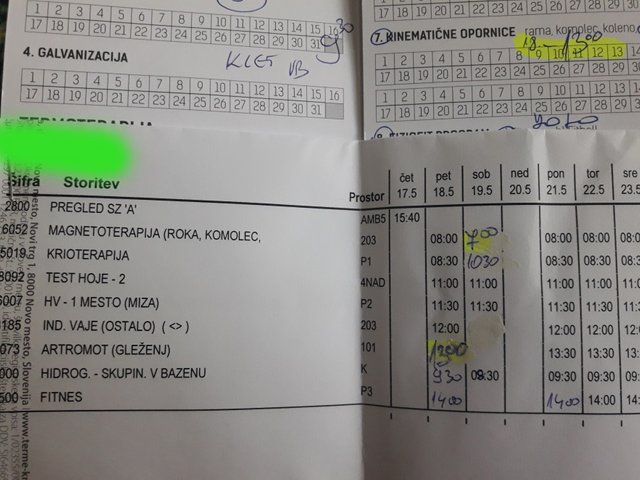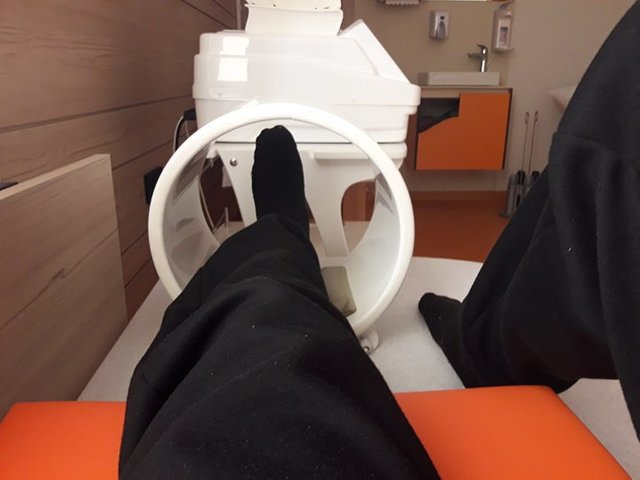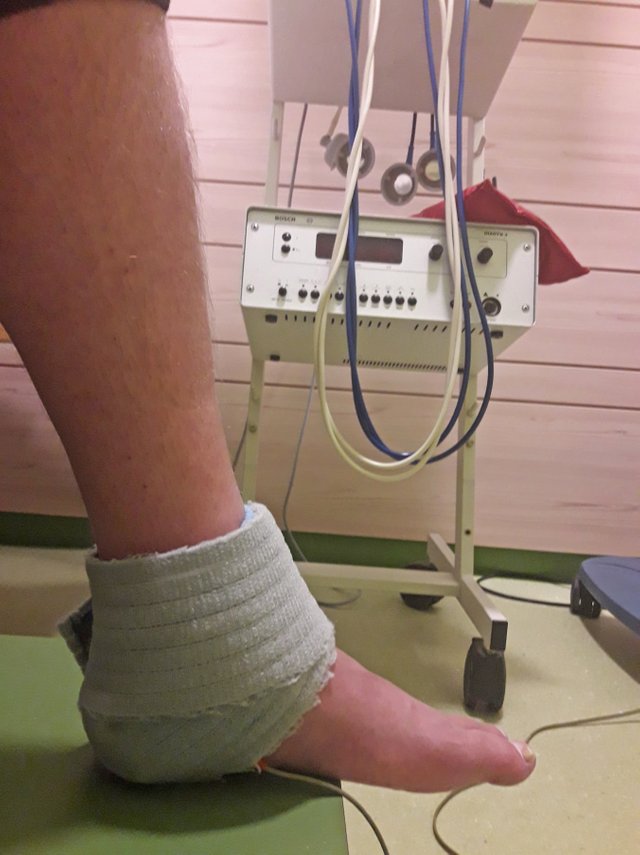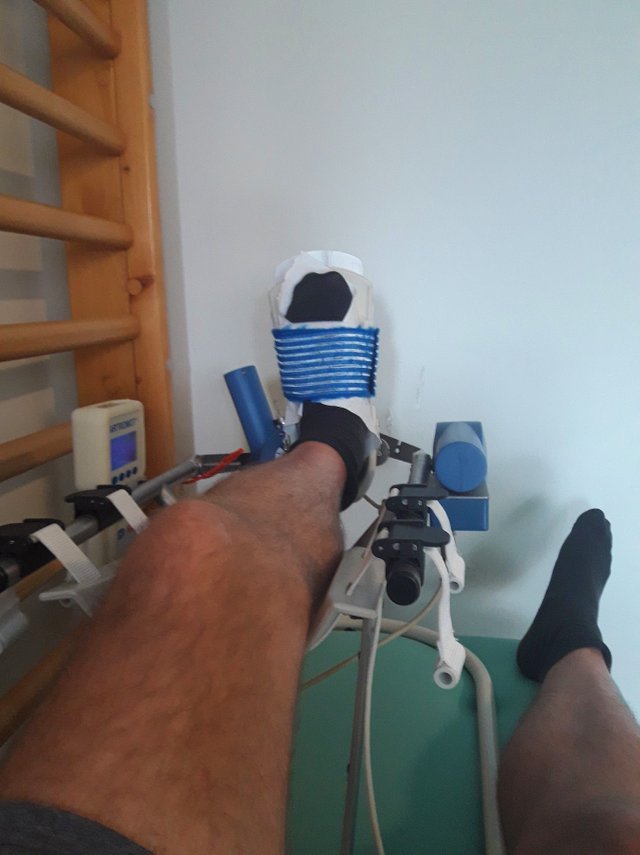Heal a broken bone as fast as possible!
Hello everybody! This is my first article on Steemit. I am a cycling enthusiast, a marketer, content creator, DIY engineer (when I have to) and soon to be dad…(this is the first time that I mentioned this with some voice).
I wrote the following article with just one motivation… to help people that find themselves in similar situation.
From a simple understanding that any injury to an athlete (even recreational) that pushes a person to a full stop for several months can be very traumatic and without proper motivation – a very negative experience. My first question that popped into my mind just a few seconds after the incident was ... When will I be able to go back on my bike? And moments after... Will my leg be the same as before? What is my next step?
Unfortunately, it sometimes turns out that communication in our medical industry is a bit rusty. Don't get me wrong. In my country we have one of the best healthcare systems in the world and many world class doctors. But this article was written because of some other issue... a gap in communication between medical departments, when one excellent doctor has to pass on information to next excellent doctor in line, or to pass information to you… the patient.
The story below is intended for anyone who has already or will encounter a similar injury, but won't get enough answers on what and how to proceed. To mild down some fear of what will become of you, your abilities in sport and to avoid any anger from lack of information...
Before I continue, let me remind you that this article is written from my own experience and my course of treatment, according to my injury. Before working on the following exercises, consult your doctor who has been treating you, your personal physician or physiotherapist.
So ... what actually happened?
Intro
How did I broke my ankle? I go to the Canaries every year for cycling preparations, because Gran Canaria is a paradise for cyclists (I will cover more of this in separate blog post) ... Last day, in the last kilometer I just wanted to drive around on the promenade. I crossed path with an overeager beach salesman and in a strange sequence of events, I fell of my bike directly on my left ankle. Ambulance quickly drove me to the nearest hospital, where I found out that I did not have adequate insurance coverage, so I decided to travel to my home country with an emergency plaster, drove directly to the emergency room in Slovenia and under the knife. Diagnosis was a trimalleolar ankle fracture. The operation took place without complications.
After surgery
From the moment the operator declared, that he "is satisfied" with the outcome of operation, through the first 24 hours of wonderfully stunned feeling, everything around you looks foggy and all the nurses absolutely wonderful. It is a little freaky not to feel your legs from the waist down. Local anesthesia needed a good day to get out of the body.
You have very limited movement at the beginning. For 5 days, when I was in the hospital, the only movement I managed was twitching with toes and the bending my leg in my knee and lifting my leg in the hip (we are talking only about a few lifts). The physiotherapist has shown me how to walk with crutches and instructed that I must bend all my joints as much as possible. I was leaving the hospital with an open-top plastic plaster, which is unobtrusively more comfortable than plaster. At this point I must say that I missed a list of possible exercises that would accompany me home or maybe some pointers what can I do in the coming weeks.
When a couch becomes your best friend
At this point, when you come home, you have 6-8 weeks of mostly just laying down. In this period I strongly recommend you to stick to the principle: Move every joint that you can, regarding the stage of recovery you are in. Do all possible movements just before you feel any pain. Don't cross the line of pain, just almost »touch it«.
The first 2 weeks for me were very stressful. I never lie down on the couch. And for the first two weeks you can lie only on your back. Just one position… day and night. It was the most brutal stage for me. But what can you do to speed up your healing process? At this point, almost everyone will find his limits in his own way in terms of movement. I was constantly repeating the exercises shown by the therapist in the hospital and looking for other exercises to strengthen other parts of the body that do not affect the ankle. You can find these exercises all over the internet or you can check some of mine further in the article.
After 14 days, a personal doctor removed the stiches and after that I treated the scar with soaking in salty water (sea water is amazing for this job, not polluted of course).
Start of (none) burdening your leg
After the first examination of a traumatologist, I was instructed to start laying down my foot on the floor for 14 days. It's quite a task because you were in this neutral position for so long that your foot becomes very stiff and inflexible. So, for the whole 14 days, I tried to lay it alongside a healthy leg, standing, pushing against the floor (always just before the pain threshold).
I got the best possible therapy I could imagine. After 8 weeks from operation, I finally could climb on the stationary bike and make some first turns of pedals. Cycling is very good for flexing ankle injuries. Remember to only turn the pedals just before the pain threshold. In the afternoon, I was doing exercises for my abs, my core and my back.
Health resort
Specialized treatment in health resort takes place at a very high pace. You can imagine it like a workday. An 8 hours job with serious physical work and it is a first serious test of your ankle.
Here is a view on my daily schedule during my therapy period:

Already at 8.00 the injured foot was placed under the magnet. Magnetic therapy is a process that allows the foot to heal more on a cellular level - from the inside out.

Treatment continues with kriotherapy ... or in layman’s term - ice therapy. In practice, this means that your injured foot is gently caressed with a piece of ice to enable a better flow of blood and downsize the swelling. You can do this also at home. The rubbing should not be too long, just before the leg gets red or before you start feeling pain.
This is followed by hydrotherapy (or as we called it, a water ballet for old people). Group practice encompasses a range of different moves that encourage the movement of injured foot to its extreme points. Exercises are done in natural thermal water, which had 28 'C. It's incredible what kind of effect is created within 14 days. I was also walking every afternoon in this water. It's level was chest-high and it helps to support your weight just right, that you can train you walking pace. You can see some example exercises in this link [this link]
Every day, under the watchful eye of a physiotherapist, a walk test is also carried out ... there is a very valuable professional input, since you need some corrections of your step movement, and you have to repeat what you learned throughout the day to speed up you recovery.
In Electrotherapy you get hooked up to this TENS like apparatus. Then an electric current stimulates your injured area. That stimulates the neural connections of the new-grown muscles and ligaments. It also reduces pain and acts anti-inflammatory.

Physically, the most difficult part of treatment are individual exercises.
It is important to remember that you have to flex your injured foot to its limits and at this state, pain is not unusual. In fact, it can hurt a lot! Personally, they were quite significant for me, they were not easy, but on the next day the progress was astonishing. Before exercising, try to get some information from your doctor or physiotherapist which exercises you can do, because each injury is specific. Here are some of basic exercises [basic exercises]
Kinetec is a stylish, automated machine that stretches your injured foot to the bearable limits. Your leg is clamped in the apparatus, with set-in maximum angles of your movements and then the machine ensures accurate and even repeats of these movements. All you have to do is lie there and meditate.

At the end, I had a regular exercise on the stationary bike. Because I am a cyclist, this was of course, my favorite exercise. I prolonged it to 40-45 min, but it's enough if you turn the pedals for 15-20 min. Now, I did a lot of stationary cycling before I went to health center and according to doctors this speed up my recovery significantly. So, if you are interested in details from this period, let me know in the comments below and I will write a post about it.
So, while I am finishing this post, my visit to health center (www.terme-krka.si) is coming to conclusion. It has been 2 months and a half from the operation. At this moment, I can almost walk without crutches and the ankle is much more flexible. I'm not yet able to make a full step, I still limp. Achilles tendon is more elastic and the foot still needs quite a bit of time to warm up to »the working temperature«. I also have problems with lifting on toes on my injured foot.
I will post a follow-up course of treatment in future blogs, so I urge you to respond to the article with comments or questions below.... Till next time.
At the end, let me remind you once again that all the exercises described here have been performed under the watchful eye of physiotherapist. The only direct advice for your injury that I can offer to you is: burden any parts of your body only to (or better, just before) your pain threshold. Never over! If you want to cross this threshold, do it in the presence of a specialized doctor.